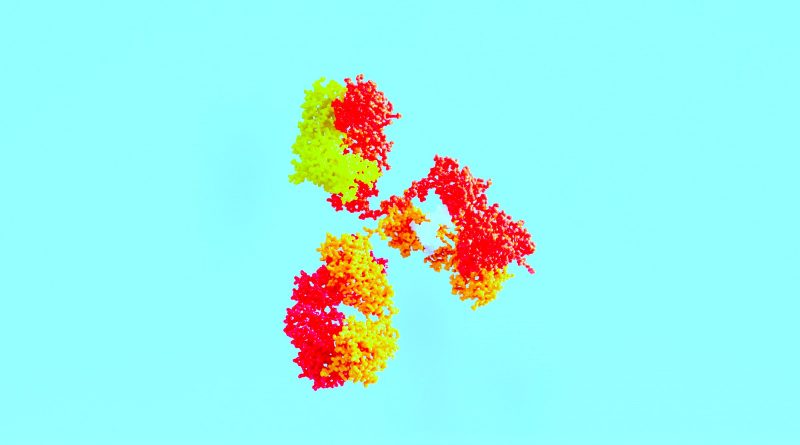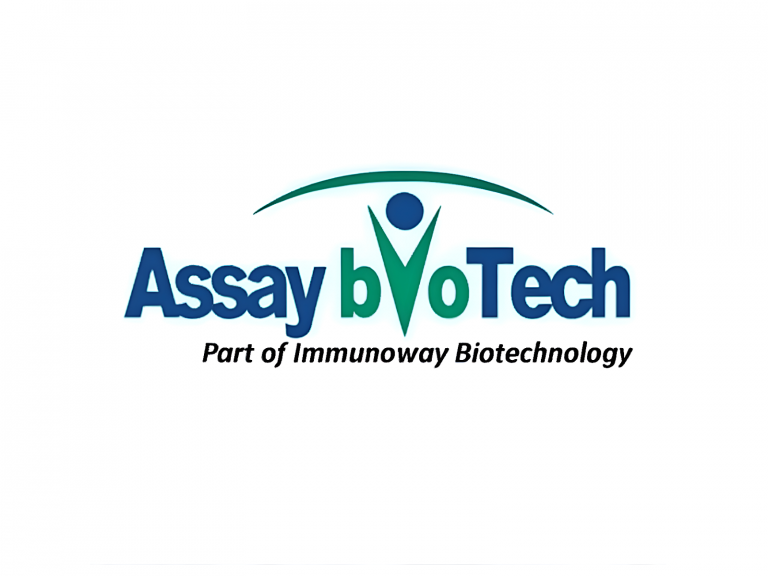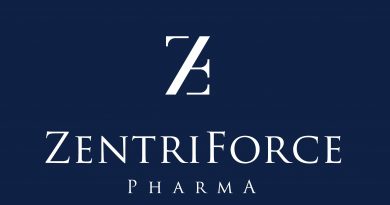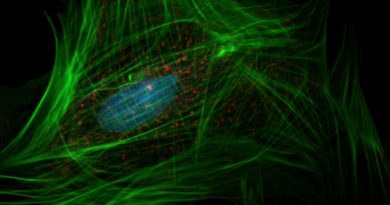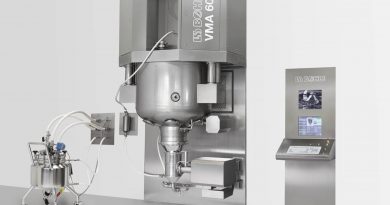Conjugated Secondary Antibodies
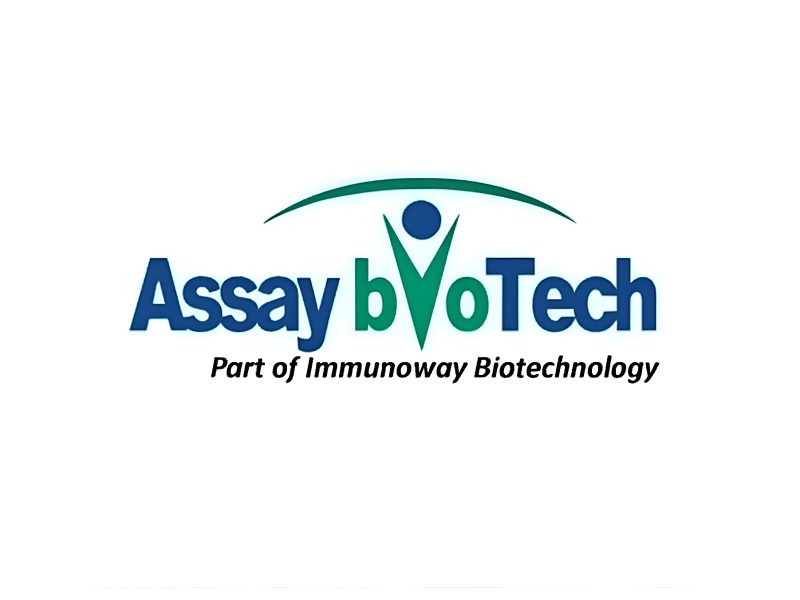
Assay Biotechnology provides an extensive selection of secondary antibodies suitable for various applications and detection systems. To ensure optimal performance, each secondary antibody is thoroughly tested and validated for its specific application, such as IF, ICC, IHC, FCM, WB, and ELISA.
Secondary Antibodies for IF, ICC, IHC, FCM WB and ELISA
Assay Biotech’s range of polyclonal and monoclonal secondary antibodies offers high specificity and sensitivity, exhibiting minimal cross-reactivity and background interference. The antibodies are available in different conjugations, including fluorophores, enzymes and biotin. Additionally, the secondary antibodies are offered in different formats, including whole IgG, F(ab’)2 fragments, and Fab fragments. They are compatible with primary antibodies derived from diverse host species and isotypes, offering flexibility and versatility in different research settings.
Choosing a Secondary Antibody by Host Species and Isotype of the Primary Antibody
The secondary antibody needs to exhibit specificity towards the host species and isotype of the primary antibody. Assay Biotechnology provides secondary antibodies that can detect primary antibodies from common host species, such as human, mouse, rabbit, goat, sheep, rat, chicken, guinea pig, donkey, cat, dog, monkey etc. The secondary antibodies can also distinguish between different subclasses or isotypes of primary antibodies, such as IgG1, IgG2a, IgG2b, IgM, etc.
Application and Detection Method
The choice of label or conjugate for a secondary antibody depends on the specific application and detection method you are using. For instance, if conducting an ELISA or western blot, an enzyme-conjugated secondary antibody-like horseradish peroxidase (HRP) would be suitable for generating a colorimetric or chemiluminescent reaction. Conversely, when performing an immunofluorescence or flow cytometry assay, a fluorophore-conjugated secondary antibody, such as Alexa Fluor®, DyLight®, or FITC, that emits fluorescence upon excitation with a specific wavelength of light would be required. Assay Biotechnology offers secondary antibodies with diverse labels and conjugates that are compatible with various detection systems.
Alexa Fluor® Conjugated Secondary Antibodies
The Alexa Fluor® conjugated secondary antibodies refer to antibodies that have been coupled with Alexa Fluor® dyes, which belong to a family of fluorescent dyes known for their exceptional brightness, photostability, and pH insensitivity.
These conjugated antibodies are employed in diverse applications like immunofluorescence (IF), Immunocytochemistry (ICC), enzyme-linked immunosorbent assay (ELISA), flow cytometry (FCM) and western blot (WB) to detect primary antibodies targeting specific antigens.
Alexa Fluor® conjugated secondary antibodies offer distinct benefits when compared to other fluorescent labels, including high brightness and photostability, low background and cross-reactivity, minimal spectral overlap with other fluorophores, compatibility with near-infrared imaging systems, and the ability to effectively penetrate deep into tissues.
Alexa Fluor® 790 Conjugated Secondary Antibodies
Alexa Fluor® 790-conjugated secondary antibodies are linked to Alexa Fluor® 790, a far-red emitting dye. Alexa Fluor® 790 has a peak excitation at 792 nm and a peak emission at 803 nm. These antibodies are utilised for detecting primary antibodies that bind to the target antigen in ELISA, IF/ICC and FCM applications. They are especially well-suited for applications that require high sensitivity in single labeling or double labeling when combined with Alexa Fluor® 680 and can be imaged using fluorescence detection systems.
Alexa Fluor® 750 Conjugated Secondary Antibodies
Alexa Fluor® 750-conjugated secondary antibodies are linked with Alexa Fluor® 750, a near-infrared emitting dye. Alexa Fluor® 750 has a peak excitation at 749 nm and a peak emission at 775 nm. These antibodies are utilised to detect primary antibodies that bind to the target antigen in ELISA, IF/ICC, and FCM applications.
Alexa Fluor® 680 Conjugated Secondary Antibodies
The Alexa Fluor® 680 conjugated secondary antibodies are antibodies that have been linked with Alexa Fluor® 680, a near-infrared emitting dye. Alexa Fluor® 680 has a peak excitation at 679 nm and a peak emission at 702 nm. These antibodies are suitable to detect primary antibodies that bind to the target antigen in IF/ICC, FCM, and WB applications.
Alexa Fluor® 660 Conjugated Secondary Antibodies
The Alexa Fluor® 660-conjugated secondary antibodies are antibodies that have been linked with Alexa Fluor® 660, a near-infrared emitting dye. Alexa Fluor® 660 has a peak excitation at 663 nm and a peak emission at 690 nm. These conjugated antibodies are utilized to detect primary antibodies that bind to the target antigen in various applications, including ELISA, IF/ICC, and FCM.
Alexa Fluor® 488 Conjugated Secondary Antibodies
The Alexa Fluor® 488 conjugated secondary antibodies are linked with Alexa Fluor® 488, a green-emitting dye. Alexa Fluor® 488 has a peak excitation at 495 nm and a peak emission at 519 nm. These antibodies are utilised to detect primary antibodies that bind to the target antigen in ELISA, IF/ICC, and FCM applications. Besides the inherent Alexa Fluor advantages of high brightness and photostability, low background and cross-reactivity, and minimal spectral overlap with other fluorophores, Alexa Fluor® 488-conjugated antibodies also offer compatibility with argon ion laser and FITC filter systems.
DyLight® Conjugated Secondary Antibodies
Assay Biotech offers a range of DyLight® conjugated secondary antibodies which are linked with DyLight® dyes, a family of fluorescent dyes known for their exceptional brightness, photostability, and water solubility. They are suitable for IF/ICC and FCM applications to detect primary antibodies that bind to specific target antigens.
DyLight® conjugated antibodies offer several advantages, such as a high signal-to-noise ratio and sensitivity, low background noise and cross-reactivity, narrow emission spectra with minimal overlap with other fluorophores, and compatibility with common excitation sources and filters.
DyLight® 649 Conjugated Secondary Antibodies
The DyLight® 649-conjugated secondary antibodies are antibodies that have been linked with DyLight® 649, a near-infrared emitting dye. DyLight® 649 has a peak excitation at 652 nm and a peak emission at 672 nm. These conjugated antibodies are utilized to detect primary antibodies that bind to the target antigen in various applications, including IF/ICC and FCM. They are compatible with near-infrared imaging systems.
DyLight® 594 Conjugated Secondary Antibodies
DyLight® 594-conjugated secondary antibodies are antibodies that have been coupled with DyLight® 594, a cyanine dye that emits red fluorescence. DyLight® 594 has a peak excitation at 593 nm and a peak emission at 618 nm. These antibodies are utilised to detect primary antibodies binding to the target antigen in IF/ICC and FCM applications. They are compatible with Texas Red filter sets and helium/neon lasers for optimal detection and imaging.
Biotin Conjugated Secondary Antibodies
Biotin conjugated secondary antibodies are antibodies that have been attached to biotin molecules. Biotin is a small molecule that exhibits a high affinity for avidin or streptavidin. The antibodies can be used to amplify the signal in various immunoassays, such as western blotting (WB), immunohistochemistry (IHC), immunohistochemistry on paraffin-embedded sections (IHC-p), immunofluorescence (IF), immunocytochemistry (ICC), and enzyme-linked immunosorbent assay (ELISA). Biotin conjugated secondary antibodies can increase sensitivity and signal amplification by producing multiple signals per antibody.
HRP Conjugated Secondary Antibodies
HRP conjugated secondary antibodies refer to antibodies that have been coupled with horseradish peroxidase (HRP), an enzyme capable of catalyzing the oxidation of substrates to generate colorimetric, fluorescent, or chemiluminescent signals. These conjugated secondary antibodies are utilised in diverse immunoassays, including ELISA, IF/ICC, WB, IF(paraffin section) and IHC-p, to detect primary antibodies binding to the target antigen. HRP conjugated secondary antibodies offer increased sensitivity and signal amplification by generating multiple signals per antibody.
Au Conjugated Secondary Antibodies
Gold (Au) conjugated secondary antibodies are antibodies that have been attached to gold nanoparticles, small spherical particles of gold with distinctive optical characteristics. These conjugated secondary antibodies are employed to detect primary antibodies binding to the target antigen in different applications, including electron microscopy, immunochromatography, and lateral flow assays. Au conjugated antibodies offer several advantages, such as high contrast and resolution, rapid and straightforward detection, and the ability to provide precise and clear results.
FITC Conjugated Secondary Antibodies
FITC conjugated secondary antibodies are antibodies that have been coupled with FITC, a fluorescein dye known for its green fluorescence. FITC has a peak excitation at 492 nm and a peak emission at 520 nm. These conjugated secondary antibodies are employed to detect primary antibodies binding to the target antigen in various applications, including WB, IHC, IF/ICC, and ELISA. FITC conjugated secondary antibodies offer several advantages, such as high brightness and photostability, low background and cross-reactivity, minimal spectral overlap with other fluorophores, and compatibility with FITC filter sets and argon ion laser systems.
Assay Biotechnology has a comprehensive catalog of high-quality secondary antibodies that can meet your research needs for any application and detection system. You can browse the full catalog by host species, label type, format type, or application type. Please use the search tool to find the specific secondary antibody you are looking for.

